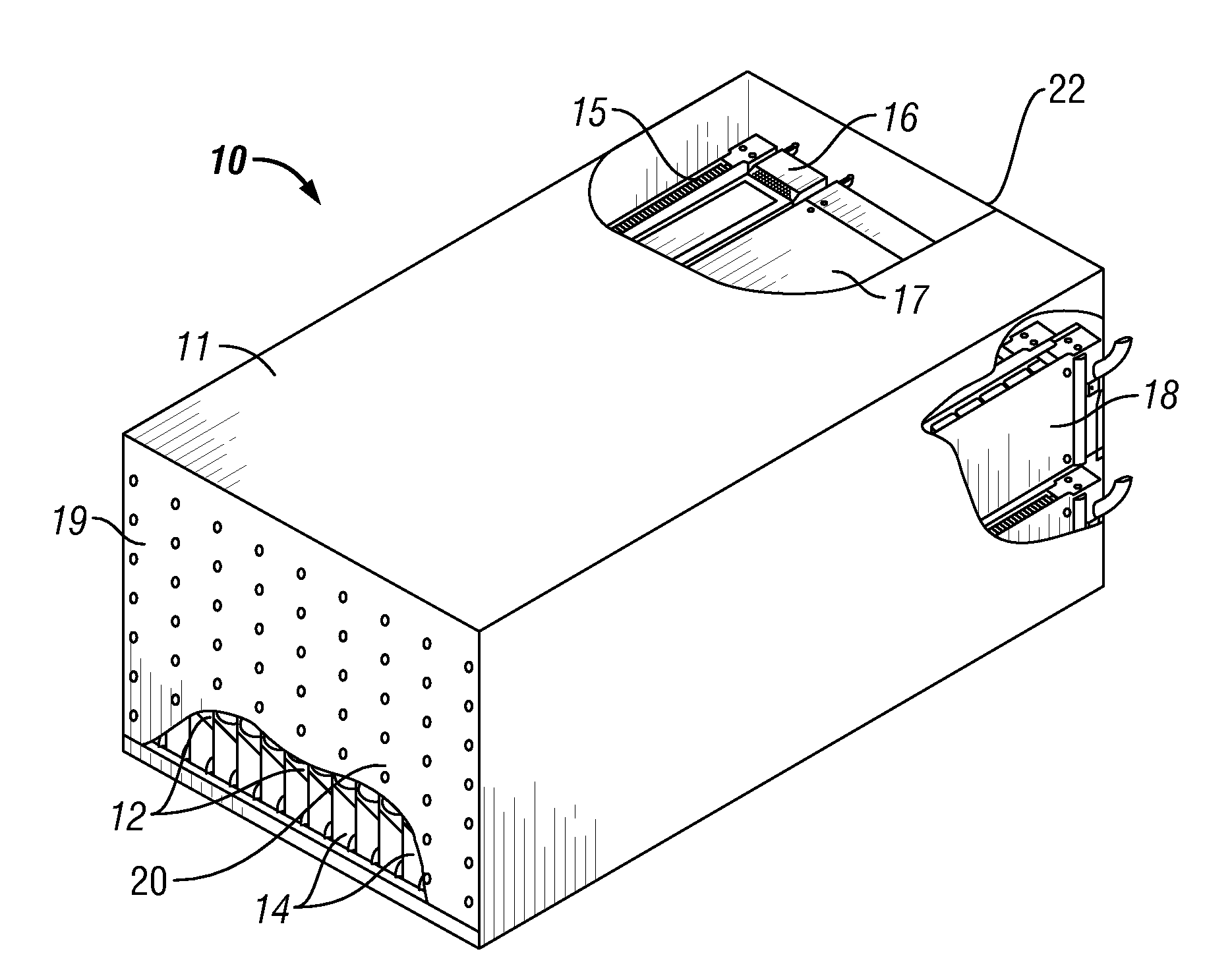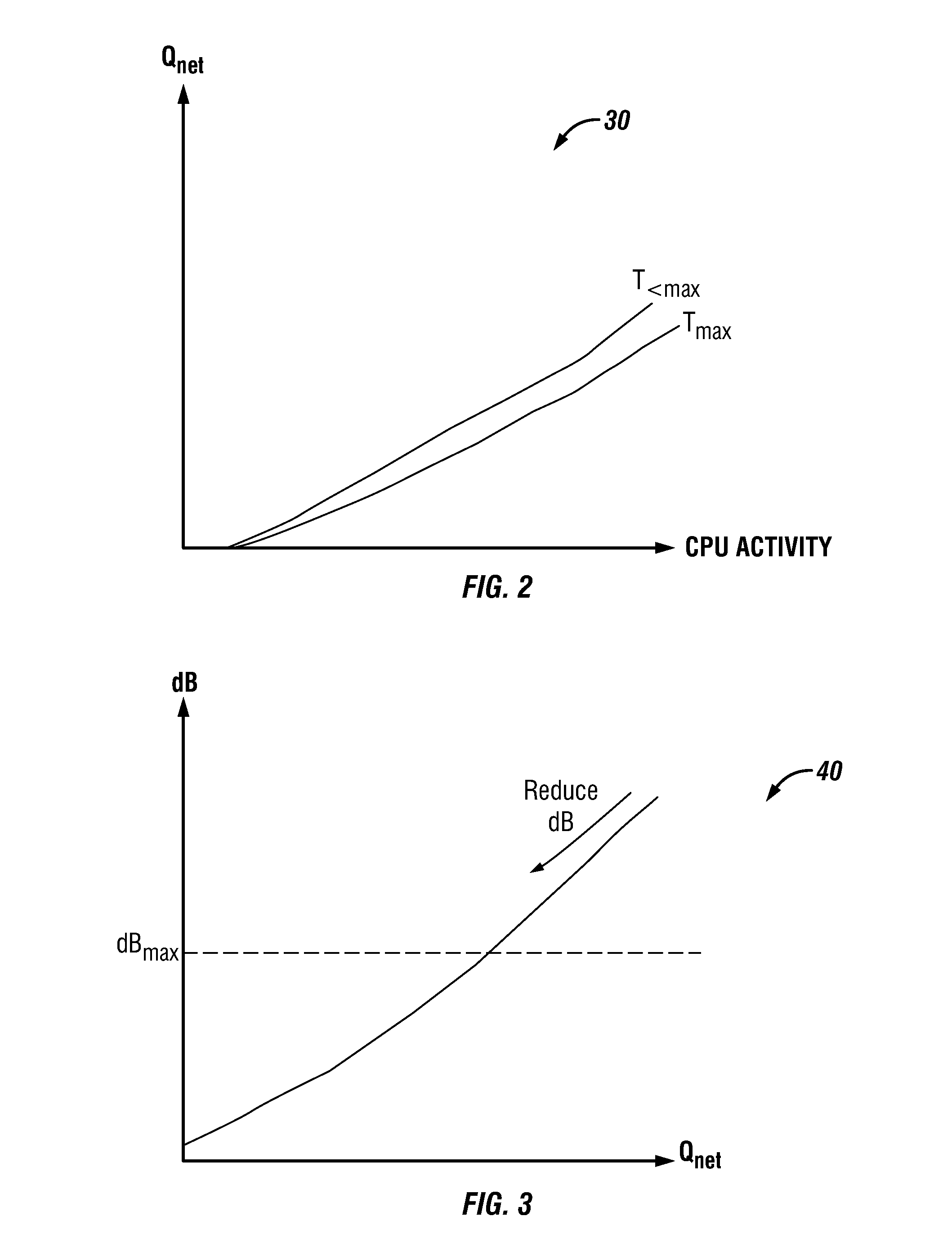Noise control in proximity to a computer system
- Summary
- Abstract
- Description
- Claims
- Application Information
AI Technical Summary
Benefits of technology
Problems solved by technology
Method used
Image
Examples
Embodiment Construction
[0017]The present invention is directed to detecting human presence and controlling sound levels generated by a computer system in response to the detected human presence. The present invention includes embodiments for automatically controlling sound levels in a computer room, generally, as well as embodiments for automatically controlling sound levels in proximity to specific components or component groups of the computer system. If a sound level exceeds a predefined setpoint, the computer system enters a noise reduction mode. In the noise reduction mode, airflow through the computer system's enclosure or through a specific electronic component or group of electronic components may be selectively reduced, such as by reducing the rotational speed of fans associated with the component(s). The temperature of the component(s) may be monitored, and processor load may be reduced if it is determined that the reduced airflow poses a risk of overheating the component(s). The computer system...
PUM
 Login to View More
Login to View More Abstract
Description
Claims
Application Information
 Login to View More
Login to View More - R&D
- Intellectual Property
- Life Sciences
- Materials
- Tech Scout
- Unparalleled Data Quality
- Higher Quality Content
- 60% Fewer Hallucinations
Browse by: Latest US Patents, China's latest patents, Technical Efficacy Thesaurus, Application Domain, Technology Topic, Popular Technical Reports.
© 2025 PatSnap. All rights reserved.Legal|Privacy policy|Modern Slavery Act Transparency Statement|Sitemap|About US| Contact US: help@patsnap.com



